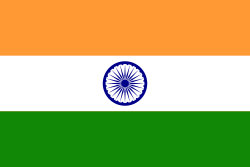Plastic twine is one of those “small” consumables that quietly dictates line speed, dispatch accuracy, and rework rates. In Gujarat’s manufacturing and export corridors, the right twine—tangle-resistant, UV-safe, and weatherproof—can replace slow manual taping, reduce film usage, and keep outbound packs tidy from plant to port. This article breaks down exactly where plastic twine wins across FMCG, Pharma, E-commerce, Logistics, Agro, and more, with practical specs and deployment tips.

What Makes Modern Plastic Twine Work on Busy Floors
Most industrial plastic twine today is made from polypropylene (PP) or high-density polyethylene (HDPE). Why operations teams prefer it:
Strength-to-weight advantage: High tensile performance relative to diameter; suitable for light to medium bundling without adding bulk.
Tangle-resistant spooling: Coreless or cored rolls designed for fast pull-off without knots, keeping pickers and packers moving.
UV & weather resistance: UV-stabilized filaments resist brittleness under sun—useful for yards, docks, and last-yard delivery staging.
Chemical & moisture resistance: Won’t absorb water and resists common cleaning agents—ideal for pharma and food areas.
Clean cut & knot retention: Low fray, secure knots; available in bright colors for line coding or process identification.
Typical supply options include diameters suited to manual tying or semi-auto dispensers, roll lengths from 200–1,000+ meters, and colorways for SKU or zone coding. For machine bundling and repetitive tasks, look for consistent denier, low variation in filament twist, and smooth wound spools that support high pull rates.
FMCG & Co-packing: Faster Kitting, Fewer Tape Touchpoints
Use-case: Bundling multi-packs (e.g., promo combos), holding secondary cartons, and tying inner polybags before master case packing.
Why twine: A two-point tie can secure inners without extra BOPP tape wraps, reducing consumable cost and time per bundle. Twine also avoids adhesive contamination on food-contact inners.
Specs to consider: Medium gauge PP twine with tensile strength appropriate for 3–15 kg bundles, bright colors for promo identification, and coreless rolls to minimize changeovers.
Outcome metric: Expect 15–30% faster operator cycle time versus full-width taping for compatible SKUs, with lower rework from adhesive tear-outs.
Pharma Secondary & Clean Handling: Integrity Without Adhesives
Use-case: Tying literature packs, IV set inners, or batch samples where adhesive residue is a risk.
Why twine: Non-reactive PP/HDPE avoids adhesive migration concerns and reduces particulate from tape tearing.
Specs to consider: Lint-free, low-fray twine; white or natural colors for visual inspection, and controlled coil tension for gentle pull-off.
Validation tip: Document tensile tests and knot slip tests during PQ/OQ; define SOPs for maximum bundle weight per twine gauge to support audits.
E-commerce & Fulfillment: Pick-Pack Discipline at Scale
Use-case: Tying together pick waves, consolidating odd-shaped SKUs, and tagging return-to-stock items.
Why twine: It’s lightweight, quick to deploy, and easy to cut at packing benches—keeping items together without shrink film.
Specs to consider: Soft-hand twine for delicate packaging, color-coded by zone or courier, and UV-stable for dock staging.
KPI impact: Reduced miss-picks and lower dunnage consumption, with cleaner inbound at last-mile partners.
3PL & Courier Hubs: Weatherproof Bundles During Cross-Docking
Use-case: Temporary bundling of poly-mailers, flyers, or small parcels through sortation and vehicle transfers.
Why twine: UV-safe, weatherproof performance keeps bundles intact across open yards and during rains—common in coastal and monsoon months.
Specs to consider: Higher tensile for compressed bundles; pre-measured cut-length options to standardize knots across shifts.
Safety note: Train for proper cutter usage and knot positioning to avoid strap interference with barcode zones.
Agro, Produce & Fisheries: Sun, Salt, and Speed
Use-case: Tying crates, shade nets, nursery bags; bundling nets and lines in fisheries.
Why twine: Salt and moisture resistance with UV stabilization makes PP/HDPE twine a reliable outdoor tool.
Specs to consider: Bright, high-visibility colors; HDPE options where extra abrasion resistance is needed; longer rolls for field use.
ROI angle: Field teams cut film usage and keep returnable crates organized, improving turnaround and reducing material loss.
Textiles, Printing & Newspapers: Neat Stacks, Clean Release
Use-case: Bundling folded textiles, tying signatures, newspaper stacks for early-morning dispatch.
Why twine: Gentle on edges, quick to untie, and doesn’t leave adhesive fiber pulls.
Specs to consider: Low-fray finish, consistent twist, and controlled elongation to maintain stack geometry.
Customer Testimonial
“Switching to UV-safe plastic twine on our FMCG kitting line in Sanand cut bundle prep time by roughly 20% and eliminated tape marks inside inner packs. The bright color coding also helped QA catch mis-kitted promos before case sealing.”
— R. Shah, Operations Manager, Multi-Brand Co-packer, Gujarat
Choosing the Right Twine: A Quick Spec Checklist
Material: PP for general use; HDPE where abrasion and outdoor exposure are higher.
Tensile/Denier: Match to bundle weight; run a three-knot test on your heaviest SKU.
UV Stabilization: Mandatory for yards, docks, or coastal routes.
Roll Format: Coreless for fewer changeovers; cored for precise dispenser fits.
Color & Coding: Use colorways to differentiate promo sets, courier lanes, or batch status.
Dispensing: Wall-mounted or bench dispensers reduce tangles and keep lines clean.
Compliance: For pharma or food areas, specify non-staining pigments and supplier CoA.
Implementation in Gujarat Networks: From Plant to Port
Gujarat’s mix of inland manufacturing and port-driven exports demands bundles that survive heat, sun, humidity, and double-handling. Plastic twine fits this profile: it’s light for air shipments, strong enough for road vibration, and stable under salt-laden air near Kandla or Mundra. Standardizing twine gauges across plants and DCs simplifies procurement and improves predictability in outbound quality checks. Pair with a simple SOP on knot type, cut length, and color coding to eliminate line-to-line variations.
Cost & Sustainability Considerations
While twine is a polymer product, it often reduces overall plastic footprint by replacing multiple layers of tapes or shrink film around inner bundles. Lower material mass per tie and less rework also contribute to downstream savings. Specify recyclable PP/HDPE and consolidate colors to improve recovery in your waste stream.
